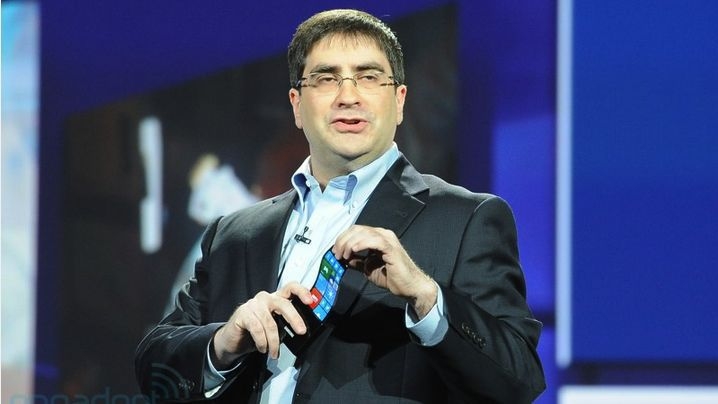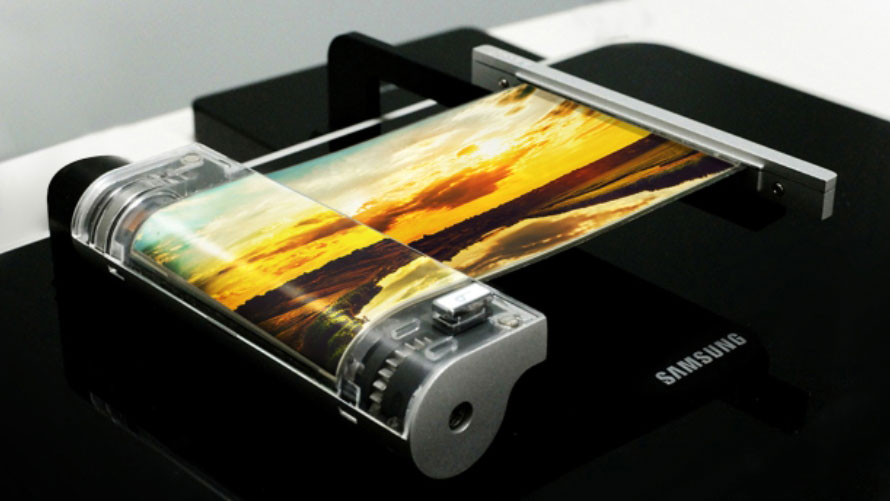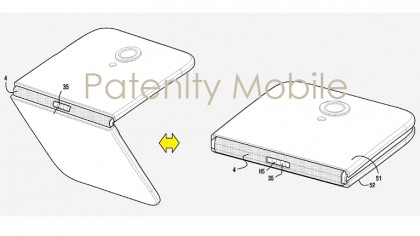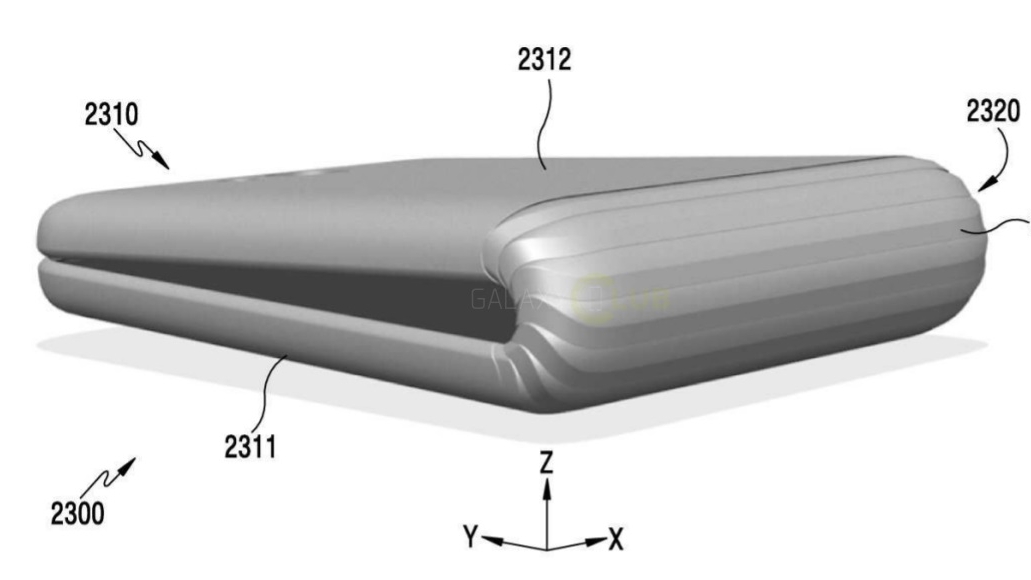Update: Ever more rumors of a 2017 launch are rolling in, with the third quarter of the year looking like the earliest we might see the Samsung Galaxy X.
Foldable phones are coming, it’s only a matter of time, and it looks increasingly like Samsung could be the first company to commercially launch one – possibly as soon as this year.
We may even know what it’s called, with the mysterious Samsung Galaxy X being the subject of several bendable leaks, foldable patents and flexible rumors.
But whether X marks the spot or not, we’re clearly entering a foldable future. To see how we got here and where we’re going, here’s the story of Samsung’s foldable phone so far.
Six years in the making

The idea of a foldable phone isn’t new to Samsung, in fact way back in 2011 the company showed off a prototype of exactly that.
The device looked chunky and awkward, but even back then it somewhat worked, remaining intact after 100,000 folds, with only a 6% drop in brightness at the center, where all the folding action happened.
This clearly wasn’t a commercial product, but later that year Samsung launched a concept video of a fully bendable (and transparent) mobile device, that could fold out from a phone-sized screen to a tablet-sized one, showing Samsung's ambitions for the technology.
Production problems
While a device like the one in the video above is likely still years away even now, by 2012 Samsung was already hard at work trying to launch the first generation of flexible or foldable phones, but a report late in the year claimed that problems with the production of flexible screens would hold the first bendy display back until at least 2013.
That didn’t stop Samsung showing off another video of a foldable future though, highlighting all sorts of transparent screens, made from plastic that’s thin, light and flexible enough to fully fold or roll.
And as 2012 came to a close it seemed Samsung might be overcoming its production problems, with another report claiming that its flexible plastic screens were in the final stage of development, with the first phones sporting them likely to land in mid-2013.

Samsung’s bendy plastic screens got a more real-world debut at CES 2013, along with a name – they were now called ‘Youm’, though it was clear from the flexible prototype on show that Samsung was still far from putting a Youm display on a commercial device.
That was made even more clear when the tech was reportedly hit with new manufacturing issues in April 2013. Supposedly the previous problems had been solved, but now Samsung was apparently struggling with the encapsulation technology, which protects the screen from moisture and air damage.
Round the Edge
The closest thing we actually got to a foldable phone from Samsung in 2013 was the Samsung Galaxy Round. This was far from the prototypes and concepts we’d seen, but as the world’s first curved screen smartphone it was a big step in the right direction.
That was followed up by the Samsung Galaxy Note Edge, which curved in a now more familiar direction, one which Samsung has since fully embraced with the likes of the Samsung Galaxy S7 Edge and other phones with curved edges.

These are still far from being foldable, and while a Samsung executive did promise a truly bendable device by the end of 2014, whatever he was referring to never appeared.
Project Valley
Talk of foldable phones went a bit quiet until mid-2015, when it was rumored that an upcoming phone codenamed Project Valley could be foldable.
At this point little was known about the device, which would apparently have two screens, but it was said to be in early development, so was unlikely to arrive for a while, if at all.
In September 2015 an “insider” claimed that we’d see a bendable phone in January 2016. It wasn’t clear whether this was Project Valley or not, but apparently it would come in both mid-range and high-end flavors. Though, of course, it didn’t arrive at all.
Samsung Galaxy X
In May 2016 Project Valley got a new name – the Samsung Galaxy X, which was believed to be the name it would release under.
According to reports at the time it would be ready for release in 2017 and would have a foldable 4K display, so that the resolution would remain high even when the phone was folded.
We were sceptical about that launch date at the time, and still are, as it sounds seriously futuristic compared to the phones we’re using currently.

But that’s not quite the full story so far. At SID 2016 Samsung showed off a roll-out display – but one which didn’t have a touchscreen layer, which would be pretty vital for a smartphone.
Then in June “people familiar with the matter” reported that we might see two foldable phones from Samsung in 2017 - backing up those previous Galaxy X reports.
Supposedly one would fold out from a 5-inch handset to an 8-inch tablet, much like the concept video Samsung showed back at the beginning of our story, while the other would fold in half like a cosmetic compact, along the lines of a folding phone patent we’d already seen.

We still weren’t convinced, but Samsung was clearly on the right track, with another patent looking to solve one of the biggest problems with folding phones – the ability to fold without damaging any internal components.
The patent described an “artificial muscle”, which would move in time with the screen bending to protect other components.

Our most recent look at what might be the Samsung Galaxy X came from a patent spotted by GalaxyClub, highlighting a long device, with a shape more like a remote control than a smartphone, but one which could fold down to half the size.
The shape doesn’t seem particularly practical, so we doubt this is the form the Galaxy X will take, but it’s vaguely along the lines of the phone-to-tablet convertible we’ve been hearing about.
And talk of a 2017 launch hasn't died. In late 2016 we heard rumors that a foldable Samsung phone would launch early the following year, followed by another later in the year. One of these was said to have two displays with a hinge in the middle, while the other will apparently have a single flexible screen.
More recently we've heard again that the Galaxy X will arrive in 2017, but not until the second half of the year.
According to some sources, more than 100,000 units are going to roll out in the third quarter of the year - though plans for a 2017 launch could apparently be changed.
That gels with a tweet from tipster @mmddj_china, who claims the Galaxy X will land in Q3 of 2017.
Though elsewhere we're hearing that Samsung may only have a prototype ready by then, and supply chain sources speaking to DigiTimes are even less optimistic, saying that a small production of foldable handsets will be made in the fourth quarter of the year, but technical issues may mean we don't see mass production before mid-2018.
The shape of things to come
That brings us up to today, and while Samsung has made some commercial progress towards a flexible phone, with curved screens on the likes of the Samsung Galaxy S8, on the surface it doesn’t seem much closer overall to a truly foldable display than it did way back in 2011.
There’s lots of talk of a 2017 launch, but that’s not the first time a questionably close launch has been rumored, and it won’t be the first time those rumors were wrong – unless Samsung really does release a folding phone this year.
The number of rumors does seem greater than ever before, but we still haven't heard any real details about the phone, which suggests it's still a long way out.
But behind the scenes promising progress does seem to have been made. Over the years several key problems in development appear to have been solved – from making a screen that can be folded thousands of times without breaking, to avoiding damage to internal components.
So we still see folding phones in our future, and maybe even the not too distant future. For now, a Galaxy X in 2017 still seems a bit unlikely, but we may at least have seen some shots of it before the end of the year, and a 2018 launch looks very possible.
from TechRadar: Phone and communications news http://www.techradar.com/news/samsung-galaxy-x-the-story-of-samsungs-foldable-phone-so-far
No comments:
Post a Comment